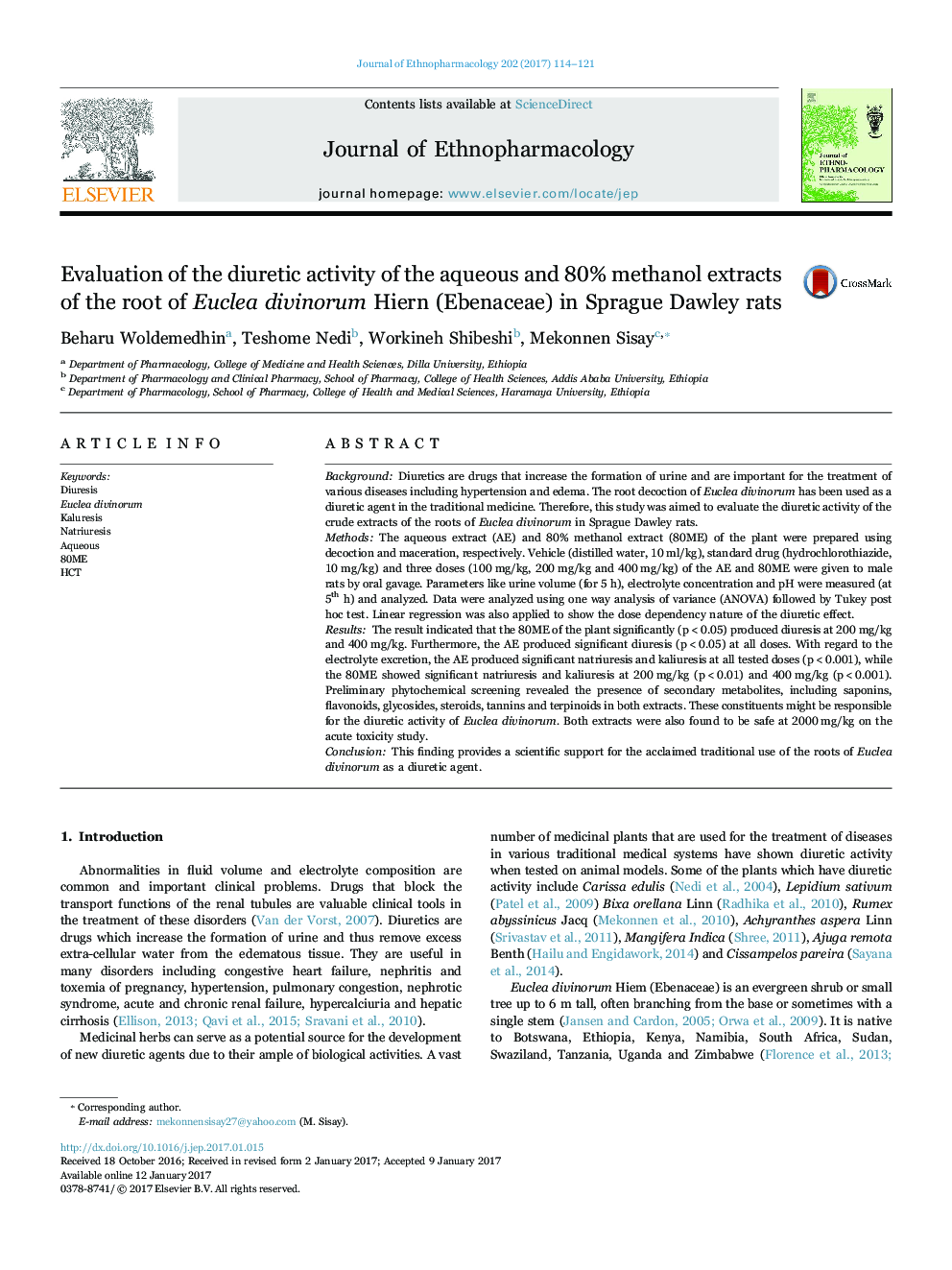| Article ID | Journal | Published Year | Pages | File Type |
|---|---|---|---|---|
| 5556109 | Journal of Ethnopharmacology | 2017 | 8 Pages |
BackgroundDiuretics are drugs that increase the formation of urine and are important for the treatment of various diseases including hypertension and edema. The root decoction of Euclea divinorum has been used as a diuretic agent in the traditional medicine. Therefore, this study was aimed to evaluate the diuretic activity of the crude extracts of the roots of Euclea divinorum in Sprague Dawley rats.MethodsThe aqueous extract (AE) and 80% methanol extract (80ME) of the plant were prepared using decoction and maceration, respectively. Vehicle (distilled water, 10Â ml/kg), standard drug (hydrochlorothiazide, 10Â mg/kg) and three doses (100Â mg/kg, 200Â mg/kg and 400Â mg/kg) of the AE and 80ME were given to male rats by oral gavage. Parameters like urine volume (for 5Â h), electrolyte concentration and pH were measured (at 5th h) and analyzed. Data were analyzed using one way analysis of variance (ANOVA) followed by Tukey post hoc test. Linear regression was also applied to show the dose dependency nature of the diuretic effect.ResultsThe result indicated that the 80ME of the plant significantly (p<0.05) produced diuresis at 200Â mg/kg and 400Â mg/kg. Furthermore, the AE produced significant diuresis (p<0.05) at all doses. With regard to the electrolyte excretion, the AE produced significant natriuresis and kaliuresis at all tested doses (p<0.001), while the 80ME showed significant natriuresis and kaliuresis at 200Â mg/kg (p<0.01) and 400Â mg/kg (p<0.001). Preliminary phytochemical screening revealed the presence of secondary metabolites, including saponins, flavonoids, glycosides, steroids, tannins and terpinoids in both extracts. These constituents might be responsible for the diuretic activity of Euclea divinorum. Both extracts were also found to be safe at 2000Â mg/kg on the acute toxicity study.ConclusionThis finding provides a scientific support for the acclaimed traditional use of the roots of Euclea divinorum as a diuretic agent.
